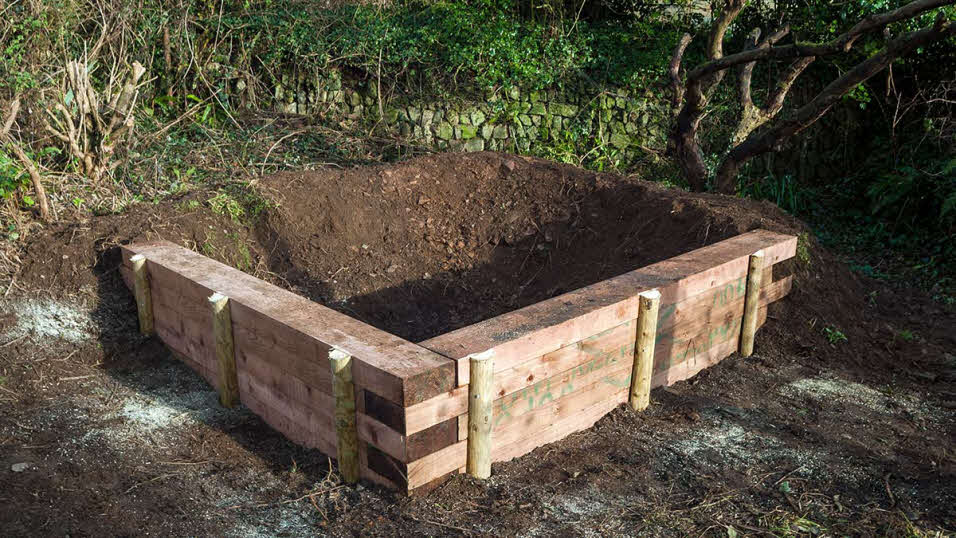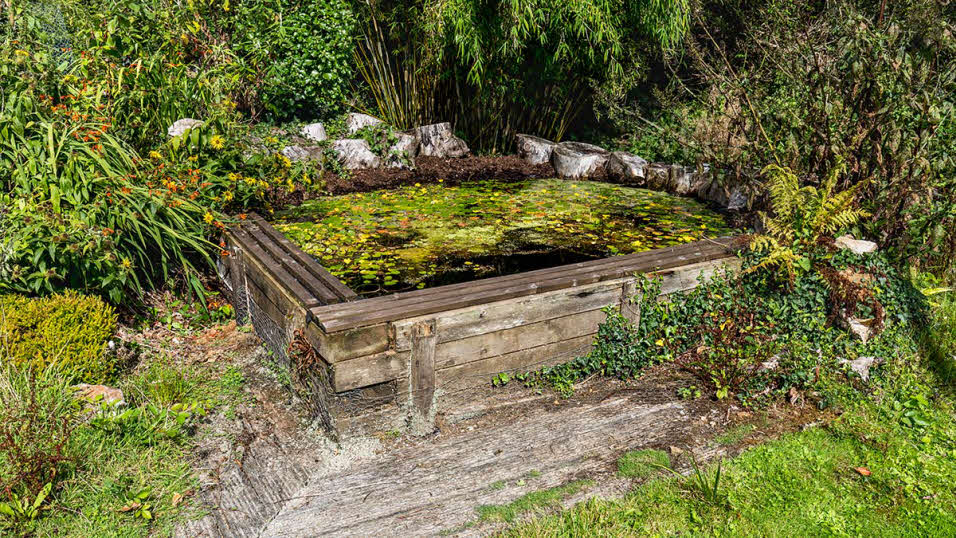Build a wildlife pond
The single, easiest way to attract wildlife into your garden is to dig a pond.
 My articles often concentrate on places you can visit to see wildlife. But this month I’d like to encourage you to work on a project that enables wildlife to visit you!
My articles often concentrate on places you can visit to see wildlife. But this month I’d like to encourage you to work on a project that enables wildlife to visit you!
The single, easiest way to attract wildlife into your garden is to dig a pond. Over the years, Sarah and I have created a variety of them, and I can’t tell you how much pleasure we have had watching badgers drinking at the water’s edge, frogs spawning, dragonflies mating and a whole host of other activities. I can’t deny that there is some work to do with a spade, but on a cold winter’s day there is a degree of satisfaction to be gained from a bit of hard graft.
Of course, before you get cracking it’s important to choose the right spot for your pond. If you want to attract dragonflies, look for a sunny site that is sheltered from the wind. For amphibians, it’s important that the water is close to longer vegetation or perhaps a log pile within which they can hide.
We were lucky enough to be able to build our pond on a slight slope in the garden. I used mock sleepers to build up two sides and banked the soil from the hole to finish off the other edges, so I actually didn’t have too much digging to do!

It’s important that there is a shallow sloping side so wildlife can get in and out easily, and there should be shelves of varying depths within the pond. My advice is to make the centre as deep as you feel is safe – the deeper the centre the cooler the water will be in the summer, and the less likely it will be to dry out or fill up with vegetation.
Regardless of the depth of the pond, safety is an important issue, especially if children will be using the garden. Strategies can be used to prevent accidents, including installing netting and fencing.
Lining your pond
Once the pond is dug, it’s time to measure up for a liner. Buy the best-quality liner you can sensibly afford and use an underlay to protect it from stones – old carpets are perfect. Leave the edges of the liner loosely secured until the pond is full of water. As it fills, the liner will be pulled slightly further into the hole as all the nooks and crannies are filled.
Ideally, you should allow the pond to fill with rainwater – but it is perfectly acceptable to use tap water (provided you have checked water restrictions in your area). To help keep our pond topped up in summer, whenever it is raining I divert a downpipe from a shed roof into the water. When the pond is full, dig the edges of the liner into the ground or mask them with logs or stones.
Pond plants will be needed to keep the water clear and to attract aquatic creatures. For a wildlife pond, only use native British species (non-native species can be very troublesome – if in doubt consult a specialist) and avoid plants with strong rhizomes (such as bulrushes) which can pierce the pond liner.
In the medium to long term, you should aim to have at least half the water’s surface covered with floating plants in summer to keep the water cooler. A variety of plant species at the pond’s edges will encourage a greater diversity of visiting wildlife.

There is no need to introduce amphibians or insects to the pond – they will find their own way there! – but you should help them by allowing some of the vegetation around the pond to grow longer, while log and rock piles are attractive hiding and basking places. Don’t introduce any non-native fish as these will eat aquatic insect larvae and tadpoles.
I hope you get as much pleasure from building and watching your ponds as I have over the years – it would be great to hear whether you have attracted any interesting species (email magazine@camc.com).

